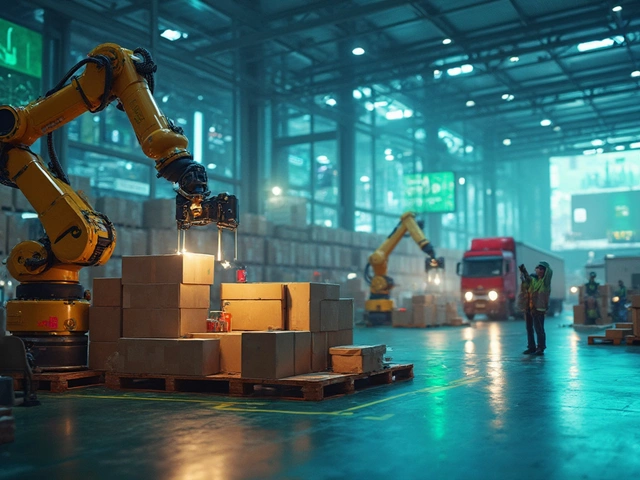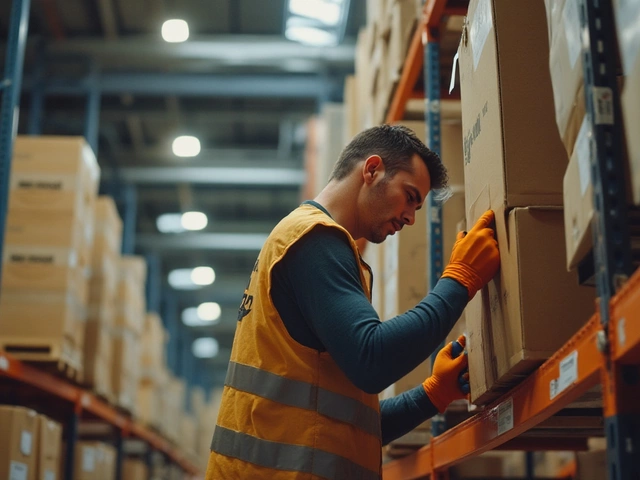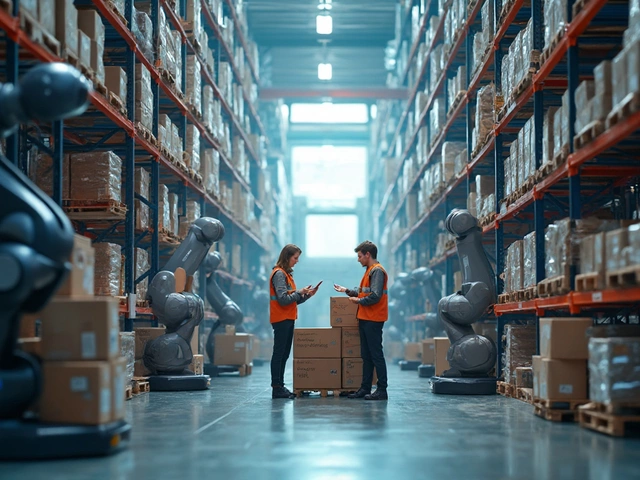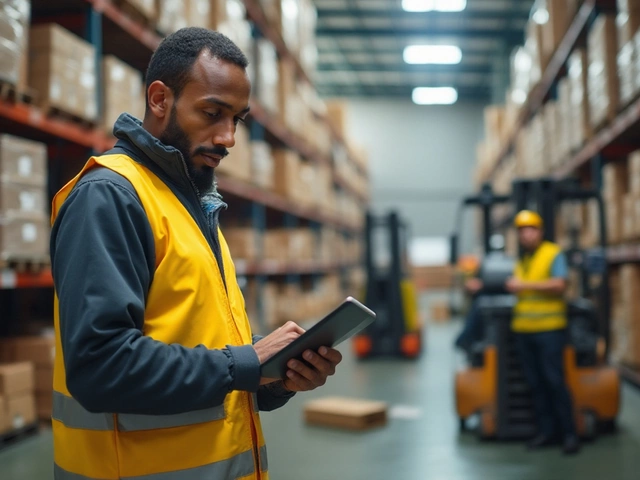You hit 'buy' online and expect your stuff to just show up, right? It sounds simple, but the journey from clicking that button to getting your package involves two big things: e-commerce and e-logistics. They sound similar—but they’re totally different in the online shopping world.
E-commerce is all about the online store—where you browse, choose, and pay. That’s what makes you a customer. But what happens after you check out? E-logistics steps in to actually get that purchase packed, shipped, and dropped at your door. Think of e-commerce as the flashy shopfront, and e-logistics as the behind-the-scenes action that gets your order moving, even through bad weather or messy supply chains.
Want a smoother online business or faster orders as a shopper? Knowing these differences actually helps. And if you’re running an online shop, getting your e-commerce and e-logistics to work together can mean the difference between repeat customers and angry emails. Here’s how it all fits together.
- E-Commerce in Plain Terms
- How E-Logistics Works
- Where E-Commerce and E-Logistics Overlap
- Common Mistakes Businesses Make
- Tips for Streamlining Your Online Orders
E-Commerce in Plain Terms
Think of e-commerce as any buying or selling that happens online. If you’ve ever bought a phone case from Amazon or grabbed new shoes off a Shopify store, that’s e-commerce in action. It covers every part of the shopping experience that’s on the website—product listings, shopping carts, payments, reviews, and even chat support pop-ups.
The backbone of e-commerce is an online platform. This might be a big marketplace like eBay or a smaller independent site built on Shopify, WooCommerce, or Magento. No matter what platform, the goal is the same: make it easy for shoppers to browse, compare, pay, and get support all in one place.
Business owners control what you see online, including prices, deals, and what’s in stock. They use data to adjust prices, add ads, and suggest other products. Some platforms even let you track price drops or get nudged about an abandoned cart.
Here’s a quick look at just how massive e-commerce has become worldwide:
| Year | Global E-Commerce Sales (USD) | Percent of All Retail |
|---|---|---|
| 2020 | $4.2 Trillion | 17.8% |
| 2022 | $5.7 Trillion | 21.0% |
| 2024 | $6.3 Trillion | 23.1% |
But not everything you see on a site is in a warehouse, and not every order goes smoothly. That’s where returns, refunds, or a quick chat with a support chatbot come into play. Good e-commerce keeps things simple for the shopper and collects instant feedback so sites can tweak what you see in real-time.
If you want to set up your own online shop, focus on:
- Picking a reliable platform (Shopify is a safe bet for beginners)
- Clear product photos and detailed, honest descriptions
- Easy, secure checkout with multiple payment options
- Responsive support, even if it’s just well-written FAQs and email replies
Remember, the easier you make it for people to say "yes," the more likely they’ll buy—and come back again.
How E-Logistics Works
E-logistics isn’t just a truck on the road. It’s the system that keeps your online orders moving smoothly from warehouse shelf to your front door. Once you finish shopping and pay, an entire network snaps into action. Your order info flows straight to a fulfillment center—think of it as a giant warehouse where products are picked, packed, and labeled for shipping.
Automated systems play a big role here. Most fulfillment centers use barcode scanners and computer software to find your items fast, reducing mix-ups. In big cities, some places even use robots to grab products from high shelves. The next step is packing—where each item is checked (no one wants the wrong size), put in the right box, and labeled with your address. That label is like your order’s passport for travel.
Now your package needs a ride. E-logistics partners with delivery services—FedEx, UPS, DHL, local couriers—to get it moving. Bigger shops often connect directly with these carriers, while smaller stores might use third-party companies that handle everything. Here’s a cool fact: Amazon’s own logistics network now moves over half its US packages, showing how serious brands treat this part of e-logistics.
- Tracking matters. As soon as your order ships, you get a tracking code. These codes aren’t just for peace of mind—they help both you and the business spot delays or lost packages before things go wrong.
- Returns are baked in. If you need to send something back, e-logistics handles that, too. Good systems make returns as painless as possible, keeping customers happy.
Speed and accuracy are now expected. Thanks to technology like route optimization and real-time inventory tracking, what once took a week can happen overnight—or even the same day in some cities.
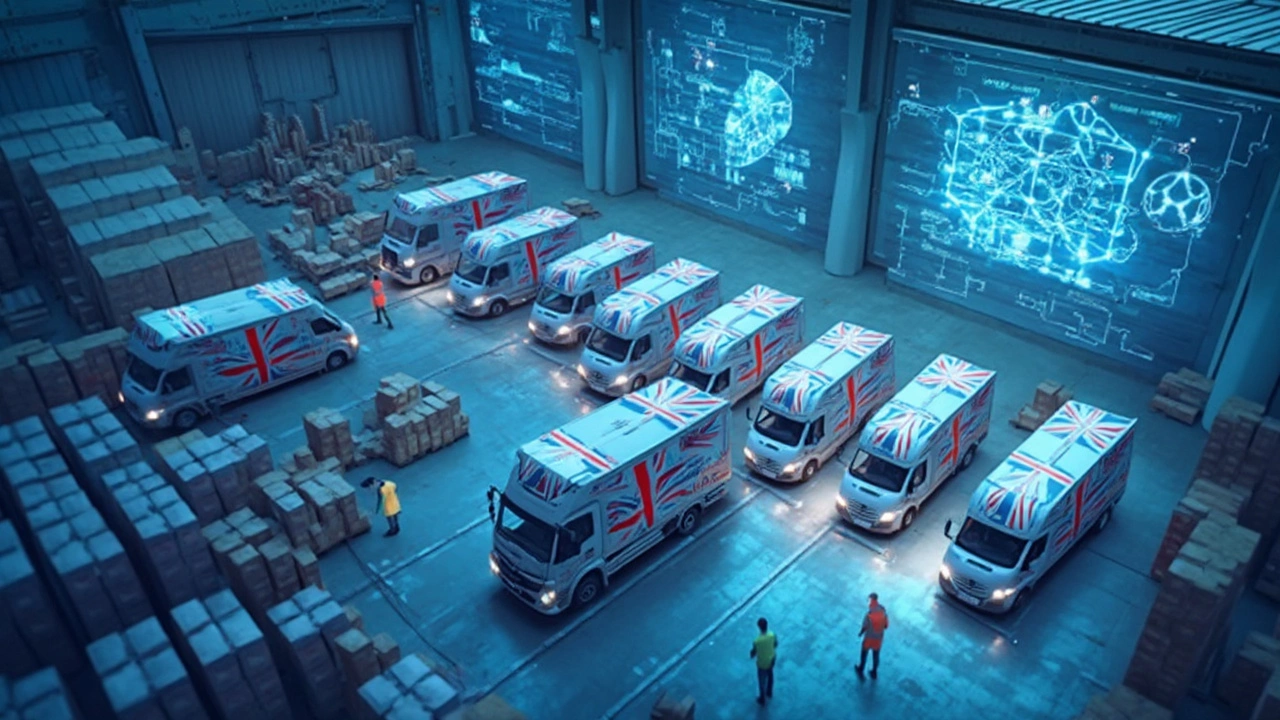
Where E-Commerce and E-Logistics Overlap
Picture this: you order a new phone case online. You get tracking updates by email, the order number pops up in your online account, and you can even contact customer support if there’s a delay. None of that would work if e-commerce and e-logistics weren’t sharing info and working hand in hand. This sweet spot is where things really get interesting (or messy, if the team drops the ball).
The overlap basically happens whenever customer experience depends on both technology and moving stuff—from real-time order processing to last-mile delivery tracking. If the online store and the delivery system don’t talk to each other, things go south fast. Here’s where they cross paths:
- Order Tracking: The e-commerce platform needs shipping details from the logistics partner so customers can track their orders live.
- Inventory Visibility: E-logistics updates the online shop about what’s actually in stock, so you don’t sell something that’s already out of the warehouse.
- Returns Handling: When a customer wants to send a product back, the whole process starts online but ends with logistics picking it up and updating refund status.
- Delivery Options: Choices like one-day shipping or click-and-collect only work when e-commerce teams and logistics know what’s actually possible in real time.
Let’s look at some numbers. A 2024 study found that 74% of shoppers won’t come back if you mess up delivery or order updates. That’s a big deal if you’re running an online business.
| Area | E-Commerce Role | E-Logistics Role |
|---|---|---|
| Order Confirmation | Sends confirmation emails | Triggers shipment prep |
| Stock Updates | Shows available items online | Keeps warehouse counts accurate |
| Shipping Choices | Offers delivery options | Handles actual routes and timing |
| Returns | Manages refund requests | Coordinates product pickups |
If you’re setting up an online business, make sure your online shop ‘talks’ to your shipping partners’ systems. Otherwise, you get mixed-up orders, missing packages, and big headaches for everyone involved.
Common Mistakes Businesses Make
Let’s be real—running an online store isn’t just about having a pretty website or catchy ads. Plenty of businesses mess up by thinking e-commerce is just about getting people to click “buy.” But the real headaches often come from what happens next, in the logistics side of things.
One of the biggest slip-ups is treating inventory like an afterthought. If you don’t know what’s in your warehouse at any given time, you’ll end up overselling or shipping late. This is a major reason why so many online shoppers complain about slow shipments or canceled orders.
Another common blunder: ignoring the importance of a reliable shipping partner. Businesses sometimes go for the cheapest option, only to regret it when packages get lost or delayed. According to a survey by Ware2Go in 2023, 63% of e-commerce companies said late deliveries had a direct impact on customer complaints and refunds.
Poor communication is another classic fail. If your online shop doesn’t update customers about their order status, people get frustrated fast. Automating order and shipping updates isn’t just a nice-to-have; it’s a must for avoiding negative reviews and refund requests.
Here are some quick pitfalls to sidestep if you’re in the game:
- Not syncing your e-commerce storefront with real-time inventory data.
- Promising “fast” shipping without confirming your logistics can actually deliver on it.
- Failing to check and update your returns policy, leading to confusion and unhappy buyers.
- Using manual order processing instead of an automated system.
- Neglecting to train your customer support on both products and delivery issues.
The bottom line: nail both your e-commerce and e-logistics strategies, or you risk making mistakes that drive customers away. Fixing these pain points early keeps shoppers happy and your business growing.
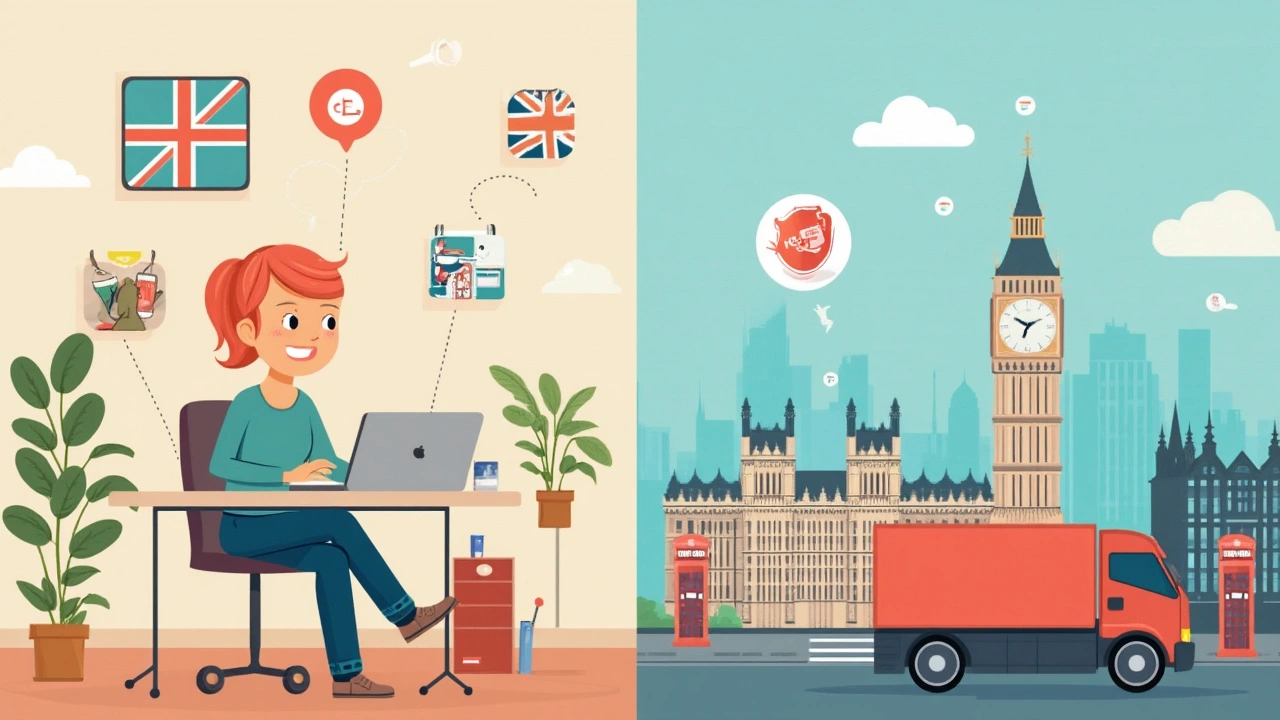
Tips for Streamlining Your Online Orders
If you want your online store to run smoothly, it’s not about wild guesses—it’s about a few proven moves that really work. Even big names like Amazon and Shopify keep tweaking their game with practical tricks. Here’s how you can get orders out fast and keep customers happy:
- Automate your order process. Use simple e-commerce software that connects to your inventory and sends orders right to your warehouse or shipping partner. This cuts out manual mistakes and speeds things up. Plenty of online stores use Shopify, WooCommerce, or BigCommerce for this.
- Offer order tracking. Customers want to know where their stuff is. Add order tracking with real-time updates—companies like AfterShip or ShipStation can handle this. Shoppers actually make repeat purchases 30% more often when they get tracking updates.
- Keep your inventory in sync. Use inventory management tools so you don’t sell what you don’t have. Nothing annoys a buyer more than hearing “Sorry, it’s out of stock” right after they order. Tools like TradeGecko or QuickBooks Commerce help here.
- Standardize packing and shipping steps. Make a packing checklist for your team. It’s basic, but it lowers errors—especially when things get busy. Pack orders the same way each time and use clear labels. Returns and lost items drop when processes are tight.
- Choose reliable shipping partners. Don't just go cheap—late or missing deliveries mess with your reviews. FedEx, UPS, and DHL have strong records, and many customers prefer fast shipping even if it costs a few dollars more.
Here’s a quick look at how streamlining your e-commerce logistics really impacts business, compared to the old manual way:
| Before Streamlining | After Streamlining |
|---|---|
| Order error rate: up to 8% | Order error rate: under 2% |
| Average fulfillment time: 2-4 days | Average fulfillment time: 1 day or less |
| Repeat customers: 20% | Repeat customers: 28%+ |
Small changes add up. The easier you make your order process, the more likely customers come back—and the less you’ll stress about late packages or angry emails. Try one or two of these tips, and you’ll see a difference almost right away.


